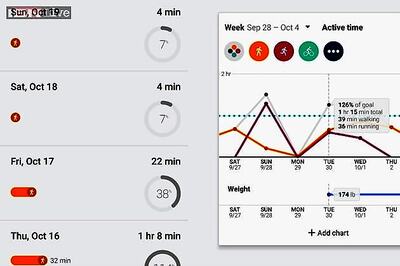
views
Opening Communication

Stay calm. Your first reaction may be frustration, anger, or upset. While it’s valid to feel this way, responding with aggression will likely make matters worse. Above all, don’t give the silent treatment back. Nothing will become resolved if you both further your contempt for each other! Staying calm means that you stay in control. If you notice yourself becoming agitated or angry, focus on your breath. Take long, deep breaths until you feel your body and mind settling down.

Start a conversation. Take the initiative to talk things over. This means that you will be the mature person and approach them to confront the problem. Choose a time when both of your are available and don't have to rush off to anything, then invite them to talk. Say, “Do you have some time? I’d like to talk and gain some understanding.” The person may not be ready to talk yet. If they don’t seem ready, say, “I can see you’re not ready to talk about this. Let’s revisit this in three days and talk then.” Prepare for the conversation ahead of time and plan to meet. For example, say, “I want to talk to you about some problems. Are you available to talk on Tuesday?”

Ask what’s going on. It’s not up to you to mind read or guess what’s going on with the other person. It is their responsibility to express their thoughts and feelings. If you’re not sure what’s going on, ask. Say, “I’ve noticed you’re distant. What’s going on?” For example, say, “I’m curious as to what’s contributing to your silence. Can you share with me what’s going on?” If they refuse to engage, say, “We can’t move forward if you’re not willing to engage. I need to know what’s going on and I need your cooperation.” If they remain firm, say that you will revisit the issue later.

Invite them to share. Give them space to share what they’re thinking and feeling. They may or may not talk, but give them the option to describe what’s going on and really listen. Don't assume to know everything Instead, ask lots of open-ended questions to try to elicit some clarity from the person. You can say, “I’d like to hear what you’re upset about, and I’m willing to listen to you if you’re ready to share.” Facilitate healthy communication and model appropriate behaviors by asking questions and letting them share without interrupting them. Another option is to write a letter and ask the other person to respond. Sometimes the direct confrontation can be too much if a lot has piled up unsaid.

Explain how you feel about being ignored. Make it clear how their silence makes you feel. Tell them that their behavior leaves little room for resolving issues and will likely damage your relationship. However, stay away from blaming them (like saying, “All you do is put things on me” or, “You expect me to solve problems for you”) and instead, say “I” statements (such as, “I feel like you want me to be responsible for your feelings”). Stick to the facts about how the lack of communication between both of you means that things don't get resolved.
Moving Forward in the Relationship

Embrace the break. The silent treatment often leads to some time apart. Instead of resenting the person or becoming upset about their actions, appreciate the space and use the time and get in touch with yourself. Put the focus on yourself and not the other person by asking yourself, “What am I feeling?” Recognize any needs you have and take care of them.

Show that you care. Although the silent treatment is annoying, try to see things through the person’s perspective. Perhaps they don’t know how to express their feelings. The silent treatment can be a way of coping for the person, albeit an ineffective way. Let them know you’re aware that they are upset and you care about how they feel. For example, say, “I can tell you’re upset, even if you don’t talk about it.”

Apologize for your own wrongdoings. If you know you’ve said or done something hurtful, fess up. The silent treatment may be a way of expressing hurt without verbalizing that hurt. If you know you’re in the wrong, say something. This gives you a chance to connect with their feelings and let them know that you’re aware of the pain you’ve caused. Just feeling heard can soften their wall. For example, if you said something hurtful, say, "I'm sorry, I didn’t realize how much I hurt you when I said that." However, do not make this about taking the burden onto your shoulders or taking responsibility for something just to resolve the issue or stop their silence. Acknowledge any wrongdoing on your own behalf but don't apologize for the sake of ending the silence.

Get therapy. Especially if the person is a family member, partner, or spouse, you may benefit in getting counseling together. Silent treatment is a form of stonewalling, and it does not lead to feelings of intimacy, trust, or happiness in a relationship. See a therapist to help both of you improve your communication and self-expression. Find a couple's or family therapist. You can call your insurance provider or local mental health clinic, or obtain a recommendation from a friend, family member, or physician.
Taking Care of Yourself

Get social support. Talk to a supportive friend or family member about your experience. If you’re confused or don’t know what to do, it can help to talk it over and hear someone else’s perspective. Even if talking about it doesn’t solve the problem, it can be helpful in clearing your head and organizing your thoughts. Find a trustworthy and supportive friend who’s a good listener. You can also talk to a therapist if you want support and coping strategies.

Do things that make you feel good. Don’t dwell on how the other person is making you feel. Instead, focus on doing things that put you in a good space. Make some time for activities you enjoy and are important to you. This is a great way to show care toward yourself and not let the other person’s actions get the best of you. For example, go for a bike ride, listen to music, paint, or play with your dog. Do the things that make you feel great.

Relax. Dealing with the silent treatment can be stressful, so deal with stress regularly. Make sure you’re making time for yourself and including some relaxation. Practice a relaxing activity every day and aim to do it for 30 minutes or more. Listen to music, do some yoga, or meditate.
Handling Emotional Abuse

Know that the silent treatment can be a form of emotional abuse. Especially if the person uses the silent treatment often, recognize that this is a form of emotional abuse. Emotional abuse may go less detected than physical abuse, but it is still damaging and can affect your self-esteem, sense of self, and self-worth. If you feel isolated or humiliated as a result of the silent treatment, the person may be using it as a form of emotional abuse. Be firm in addressing the silence. Say, “This is abusive and I won’t stand for it.” You cannot change someone. If the person has promised to change yet no progress has been made, take some steps to deal with emotional abuse on your own terms. Involve the support of other people. You may need to leave the relationship. Consider if this is a pattern or a one-time occurrence. If it happens often, then it may be abuse. If it happens just one time, they you may want to have a follow-up conversation with the person to make sure it doesn't happen again.

Set boundaries. It’s likely the person doesn’t practice healthy boundaries, so it’s up to you to create some. Start by identifying your physical, emotional, spiritual, and mental limits. Think about what makes you feel upset or stressed and what you feel is intolerable in your relationships. Let the person know your boundaries and when they cross them. Be assertive in enforcing your boundaries. Say, “I refuse to engage in the silent treatment. Either you need to use a different approach or I can’t be a part of this any longer.” You can also say, “You might use the silent treatment, but I don’t. We must discuss this.”

End the relationship. Ultimately, you can’t change the other person, no matter how hard you try to make things better. If the relationship is abusive and harmful for you, consider walking away. Tell them you need to move on. Your well-being is more important than spending time around someone who has no qualms about emotionally abusing you. Don’t accept emotional abuse in your life. You deserve relationships with people who are willing and capable of communicating in a mature and healthy manner. People who have long histories of this behavior aren't likely to be "fixed" for your friendship or relationship. In the end, you will be happier and have more time and space in your life for others who are ready for your friendship or love.

Consider what causes silent treatment. The silent treatment is a form of attention, power, and control over another person and is a passive-aggressive approach in communication. Someone might use the silent treatment as a way to avoid conflict or deflect responsibility. At times, people use the silent treatment as a way to punish another person. Ultimately, the person lacks the ability to communicate their feelings appropriately. For example, a person may want to shift blame onto you instead of owning their faults. Or, they want to magnify your faults instead of recognizing their own. Whatever it is, the silent treatment makes you feel guilty or at fault instead of them.




















Comments
0 comment